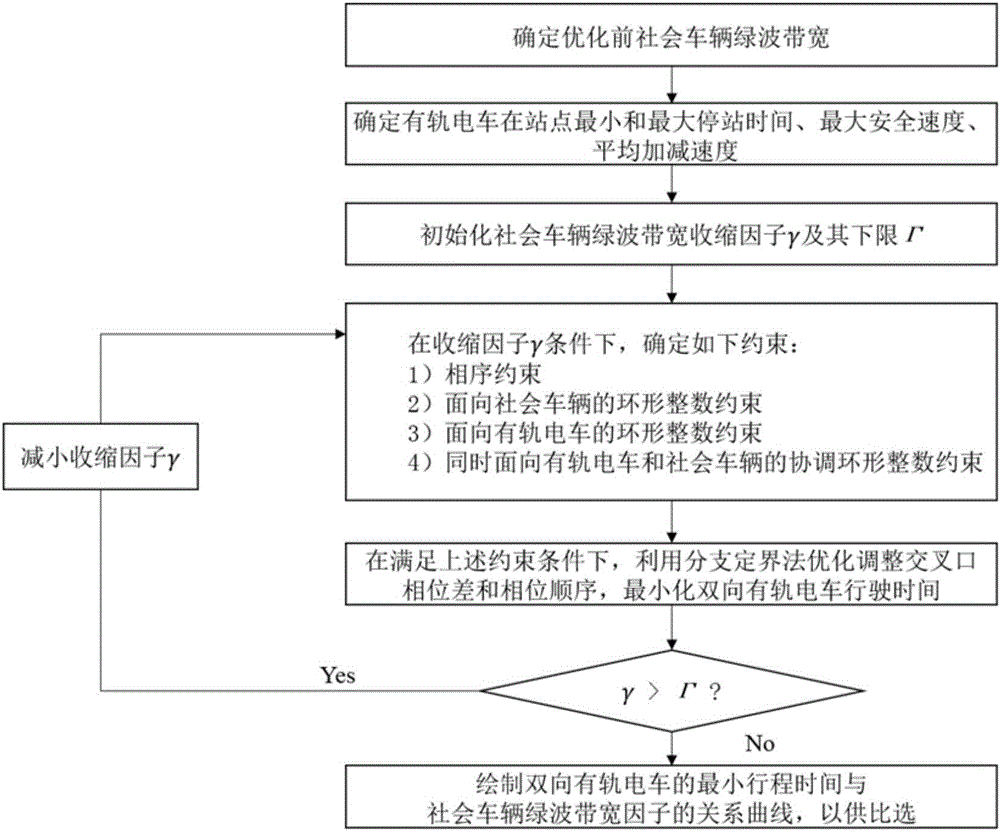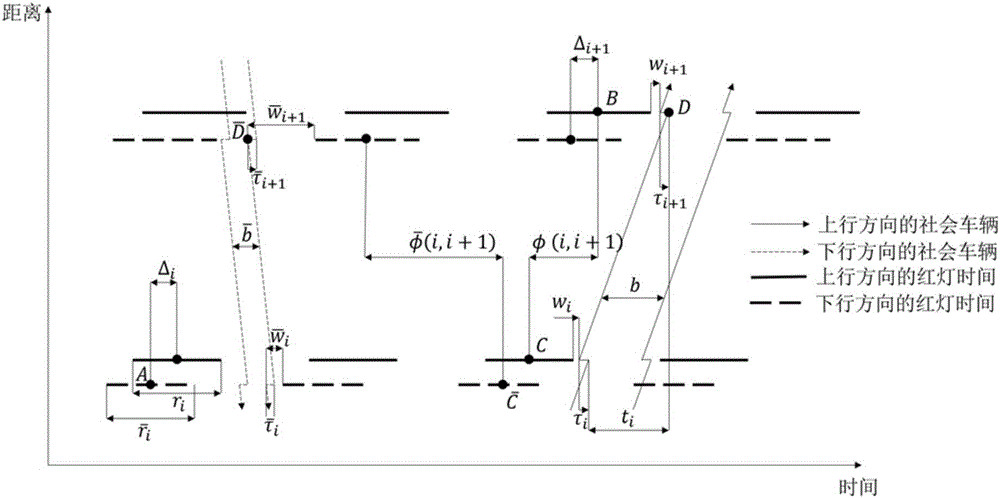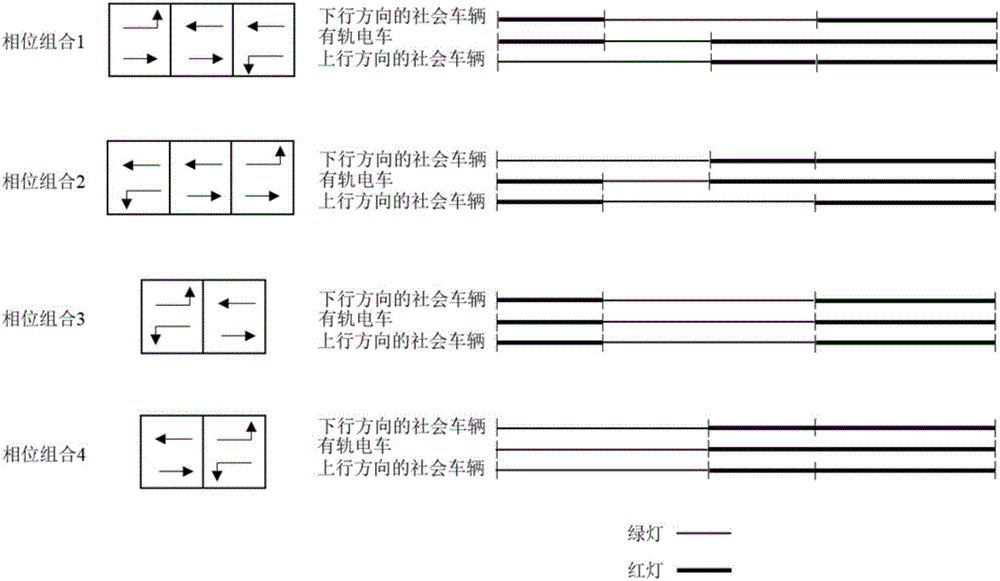Passive priority method of tramcar signals under special right of way
A tram and signal technology, applied in the field of transportation, can solve the problems of the length of the destruction cycle, the green signal ratio, the conflict of vehicles in the left-turn society, and the waste of tram green-wave bandwidth resources.
- Summary
- Abstract
- Description
- Claims
- Application Information
AI Technical Summary
Problems solved by technology
Method used
Image
Examples
Embodiment
[0077] The present invention will be described in detail below in conjunction with the accompanying drawings and specific embodiments. Such as figure 1 Shown is the flow chart of the present invention.
[0078] Step 1: According to the period length of the existing signal timing scheme, the green signal ratio and the average speed of social vehicles driving on the road section, determine the bandwidth of the green wave facing social vehicles before optimization;
[0079] figure 2 The meaning of the parameters in Table 1:
[0080] Table 1
[0081]
[0082] In order to improve the operating efficiency of the urban traffic system, linkage control is usually performed on several intersections, that is, to set a reasonable phase difference between different intersection signal timing schemes, so that social vehicles can pass through several intersections continuously without stopping, such as figure 2 shown. According to the average speed of social vehicles on the road se...
PUM
 Login to View More
Login to View More Abstract
Description
Claims
Application Information
 Login to View More
Login to View More - R&D
- Intellectual Property
- Life Sciences
- Materials
- Tech Scout
- Unparalleled Data Quality
- Higher Quality Content
- 60% Fewer Hallucinations
Browse by: Latest US Patents, China's latest patents, Technical Efficacy Thesaurus, Application Domain, Technology Topic, Popular Technical Reports.
© 2025 PatSnap. All rights reserved.Legal|Privacy policy|Modern Slavery Act Transparency Statement|Sitemap|About US| Contact US: help@patsnap.com



